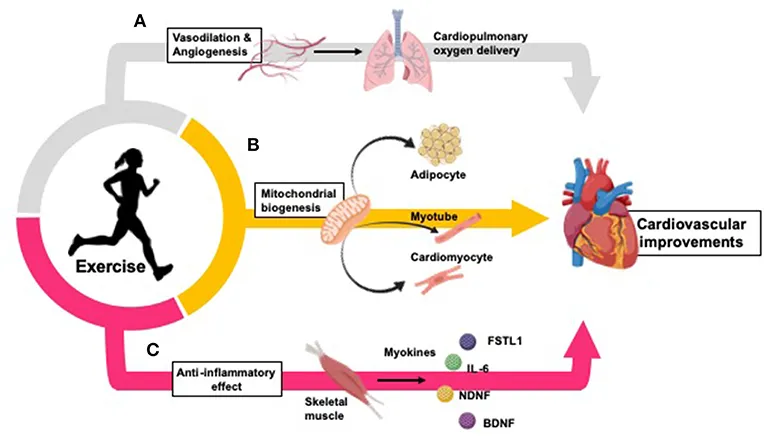What Are the Advantages of Having a Healthy Population ?

Table of Contents
Introduction
When we talk about a “healthy population,” we refer to a community where the majority of individuals enjoy good physical, mental, and social well-being. Such a population not only benefits from better health outcomes but also thrives economically, socially, and environmentally. Understanding the multifaceted advantages of a healthy population can help us appreciate why investing in public health is crucial for any society.
Economic Advantages
Increased Productivity
A healthy population is synonymous with a productive workforce. When individuals are in good health, they are more capable of performing their jobs efficiently and effectively. This results in higher productivity levels, which directly contributes to the economic growth of a nation.
Reduced Healthcare Costs
Healthcare costs can be a significant burden on both individuals and governments. A healthy population experiences fewer health issues, leading to reduced healthcare expenditures. This means more funds can be allocated to other critical areas like education and infrastructure.
Boost in Economic Growth
Healthy individuals are more likely to engage in economic activities, from starting businesses to participating in the labor force. This increased economic activity leads to a more robust economy, driving growth and development.
Enhanced Workforce Participation
Good health ensures that more people are capable of working, reducing absenteeism and increasing workforce participation rates. This not only benefits businesses but also contributes to overall economic stability.
Social Benefits
Improved Quality of Life
Health is a key determinant of quality of life. When people are healthy, they can engage in social activities, pursue hobbies, and enjoy life to the fullest. This improved quality of life enhances overall societal happiness and cohesion.
Enhanced Community Well-being
Communities with healthy populations tend to have stronger social bonds. People are more likely to participate in community events and support each other, fostering a sense of belonging and well-being.
Reduced Crime Rates
There is a correlation between health and crime rates. Healthier populations often experience lower crime rates as good health is linked to better social behavior and fewer socioeconomic disparities.
Greater Educational Attainment
Healthy children are more likely to attend school regularly and perform better academically. This higher educational attainment can lead to better job opportunities and a more educated workforce in the future.
Health Benefits
Lower Prevalence of Chronic Diseases
A healthy population has a lower prevalence of chronic diseases such as diabetes, heart disease, and cancer. This not only improves individuals’ lives but also reduces the burden on healthcare systems.
Increased Longevity
Healthier populations tend to live longer lives. Increased longevity allows individuals to contribute to society for a longer period, enriching their communities and families.
Enhanced Mental Health
Mental health is an integral part of overall health. A healthy population experiences lower rates of mental health issues, such as depression and anxiety, leading to happier and more fulfilling lives.
Better Physical Health
Physical health is foundational to a healthy population. Regular physical activity, balanced nutrition, and preventive healthcare contribute to better physical health, reducing the risk of diseases and enhancing daily life.
Environmental Advantages
Sustainable Living Practices
Healthy populations are often more aware of and engaged in sustainable living practices. They are more likely to support and adopt environmentally friendly behaviors, contributing to environmental conservation.
Reduced Environmental Strain
A healthy population exerts less strain on the environment. With fewer health crises and medical emergencies, there is a reduced need for the production and disposal of medical supplies and waste.
Increased Awareness of Environmental Issues
Health and environmental awareness often go hand in hand. Healthy individuals are more likely to understand and advocate for environmental issues, leading to broader societal changes in environmental policy and practices.
Political Stability
Strengthened Social Cohesion
A healthy population is a united population. When people are healthy, they are more likely to engage in civic activities and support democratic processes, strengthening social cohesion and political stability.
Reduced Political Unrest
Healthier populations are generally more content and less likely to engage in political unrest. This stability is crucial for the smooth functioning of government and society.
Better Governance
Governments can focus more on development projects and less on managing health crises in a healthy population. This allows for better governance and more efficient use of resources.
Educational Benefits
Improved Academic Performance
Healthy students are better learners. Good health enables children to focus, learn, and perform well academically, leading to better educational outcomes.
Higher Rates of School Attendance
Health issues are a major cause of absenteeism in schools. A healthy population sees higher rates of school attendance, ensuring that children receive a consistent and quality education.
Enhanced Cognitive Development
Proper nutrition and healthcare are essential for cognitive development. Healthy children are more likely to develop the cognitive skills needed for academic and life success.
Technological Advancements
Innovation in Healthcare Technologies
A healthy population drives demand for advanced healthcare technologies. This can lead to innovation and the development of new medical technologies that benefit society as a whole.
Adoption of Health-promoting Technologies
Health-conscious populations are more likely to adopt technologies that promote health, such as fitness trackers, telemedicine, and health apps. This further enhances the overall health of the community.
Cultural and Recreational Benefits
Increased Participation in Cultural Activities
Healthier individuals are more likely to engage in cultural activities, such as attending concerts, visiting museums, and participating in local traditions. This enriches cultural life and preserves heritage.
Boost in Recreational Activities
A healthy population enjoys more recreational activities, from sports to outdoor adventures. This not only benefits individuals’ health but also boosts the local economy through tourism and recreation industries.
Preservation of Cultural Heritage
Healthy populations are better able to preserve and pass down cultural heritage. This ensures that traditions, languages, and customs are maintained for future generations.
Family and Personal Benefits
Stronger Family Bonds
Healthier individuals can spend more quality time with their families, strengthening family bonds and creating lasting memories.
Personal Well-being and Satisfaction
Good health leads to personal well-being and satisfaction. People feel better about themselves and their lives, leading to higher levels of happiness and fulfillment.
Reduced Family Healthcare Burden
A healthy population reduces the burden of healthcare on families. With fewer illnesses and medical expenses, families can allocate resources to other important areas, such as education and recreation.
Global Advantages
Better Global Health Outcomes
A healthy population contributes to better global health outcomes. As diseases know no borders, healthier nations can prevent the spread of infectious diseases worldwide.
International Cooperation in Health Initiatives
Countries with healthy populations are better equipped to engage in international health initiatives. This cooperation can lead to global advancements in healthcare and disease prevention.
Case Studies
Countries with Notable Health Outcomes
Examining countries with notable health outcomes, such as Japan and Sweden, can provide insights into the benefits of a healthy population and the strategies they employ.
Successful Health Initiatives and Their Impact
Analyzing successful health initiatives, such as vaccination programs and public health campaigns, can highlight the positive impact of these efforts on population health.
Challenges and Solutions
Barriers to Achieving a Healthy Population
Several barriers can hinder the achievement of a healthy population, including socioeconomic disparities, lack of access to healthcare, and unhealthy lifestyles.
Strategies for Overcoming Challenges
Addressing these challenges requires a multifaceted approach, including policy changes, community engagement, and investment in public health infrastructure.
Conclusion
Investing in the health of a population offers immense benefits across economic, social, and environmental spheres. By understanding and promoting the advantages of a healthy population, we can work towards a future where everyone has the opportunity to live a healthy, fulfilling life.
How can individuals contribute to a healthy population?
Individuals can contribute by adopting healthy lifestyles, participating in community health initiatives, and supporting policies that promote public health.
What role does the government play in ensuring a healthy population?
Governments play a crucial role by providing healthcare services, enacting public health policies, and investing in health education and infrastructure.
Are there economic disadvantages to having a healthy population?
While there may be initial costs associated with improving public health, the long-term economic benefits far outweigh these expenses.
Best Book for healthy population:








